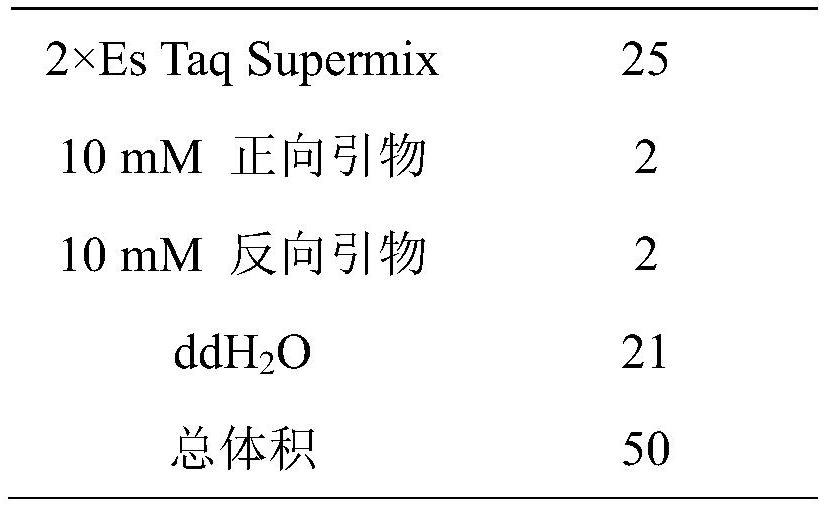Kluyveromyces and application thereof in production of xylitol
A Kluyveromyces, xylitol technology, applied in the field of microorganisms, can solve the problems of large environmental pollution and high requirements for chemical equipment
- Summary
- Abstract
- Description
- Claims
- Application Information
AI Technical Summary
Problems solved by technology
Method used
Image
Examples
Embodiment 1
[0047] This example is used to illustrate the screening, purification and identification methods of Kluyveromyces.
[0048] The applicant collected decaying leaves of sweet potato plants in the intertidal zone of the mangrove area in Haikou, Hainan in May 2020, and used the following method to isolate 12 strains of Kluyveromyces, and screened 3 strains with high xylitol production.
[0049] (1) Preparation of separation medium
[0050] GYPS medium (g / L): 4 glucose, 4YE, 4 peptone, 14 agar, 25 sea salt. Sterilize at 115°C for 15 minutes. After the sterilization is completed, the plate is poured into the ultra-clean bench to obtain the Kluyveromyces isolation medium.
[0051] (2) Isolation, purification and identification of Kluyveromyces
[0052] Collected decayed leaves of mangrove plants shake off the silt on the leaves, wipe the scissors with 75% ethanol, cut them into 1cm square pieces, wash them with sterile seawater for 1-2 times, stick them flat on the GYPS plate, and...
Embodiment 2
[0069] In this example, the production of xylitol is described in detail by using the tail liquid of wheat straw straw sugar fermentation by Corynebacterium glutamicum as raw material. The straw sugar mentioned in the present invention is a mixture of glucose and xylose. Specific steps are as follows:
[0070] (1) Preparation of straw sugar
[0071]Preparation of wheat straw sugar: Wash and chop the wheat straw raw material, and pretreat the wheat straw by steam explosion. The wheat straw is then treated with sodium hydroxide and sodium sulfite, the weight of sodium hydroxide: dry weight of wheat straw raw material is 1:6, the weight ratio of sodium sulfite: sodium hydroxide is 1:8, and the treatment conditions are: the reaction temperature is 150°C , the time is 1h. After fully removing lignin, extract wheat straw fibers, dehydrate and fully wash away residual lye; soak straw fibers in acetic acid-sodium acetate (or similar buffer pair with buffering effect) buffer solution...
Embodiment 3
[0085] This example describes in detail the production of xylitol from the rice straw sugar fermentation tail liquid of chlorella. The straw sugar in the present invention is a mixture of glucose and xylose. Specific steps are as follows:
[0086] (1) Preparation of straw sugar:
[0087] Preparation of rice straw sugar: Wash and chop the raw material of rice straw, and pretreat the rice straw by steam explosion. The wheat straw is then treated with sodium hydroxide and sodium sulfite, the weight of sodium hydroxide: the absolute dry weight of rice straw raw material is 1:10, the weight ratio of sodium sulfite: sodium hydroxide is 1:5, and the treatment conditions are: the reaction temperature is 160°C , the time is 1h. After fully removing lignin, extract rice straw fibers, dehydrate and fully wash off residual lye; soak straw fibers in acetic acid-sodium acetate (or similar buffer pair with buffering effect) buffer solution, add cellulase, Hydrolyze the fiber pulp into a h...
PUM
 Login to View More
Login to View More Abstract
Description
Claims
Application Information
 Login to View More
Login to View More - R&D
- Intellectual Property
- Life Sciences
- Materials
- Tech Scout
- Unparalleled Data Quality
- Higher Quality Content
- 60% Fewer Hallucinations
Browse by: Latest US Patents, China's latest patents, Technical Efficacy Thesaurus, Application Domain, Technology Topic, Popular Technical Reports.
© 2025 PatSnap. All rights reserved.Legal|Privacy policy|Modern Slavery Act Transparency Statement|Sitemap|About US| Contact US: help@patsnap.com


